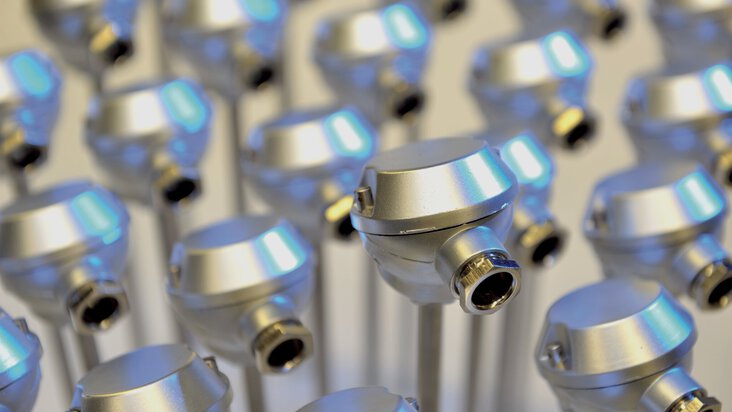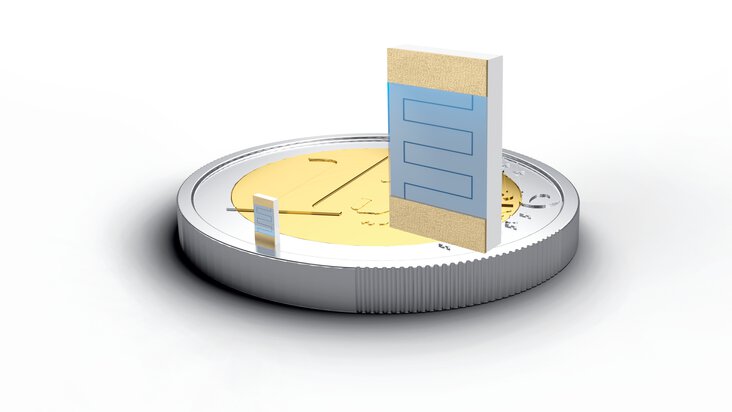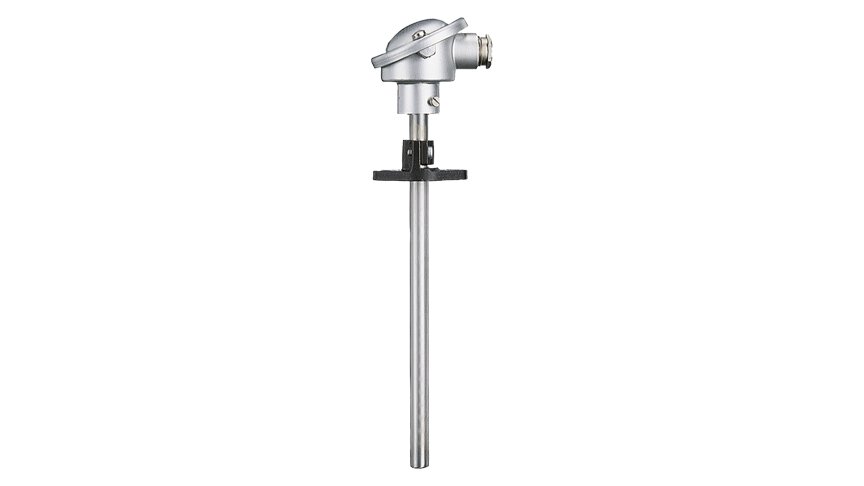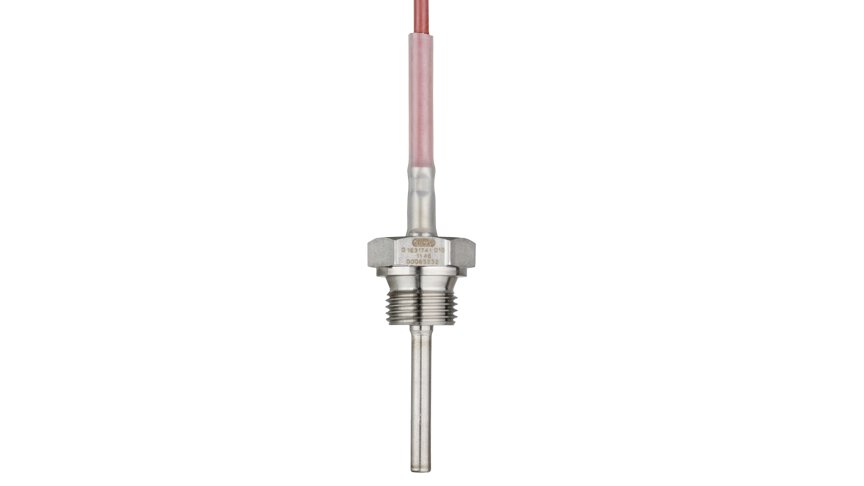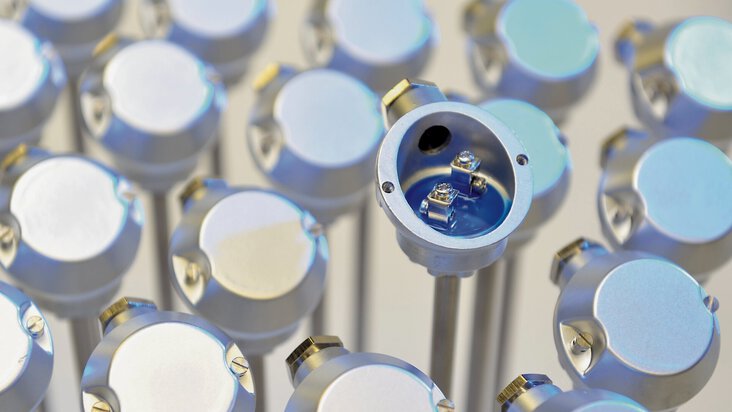
RTD temperature probe/Resistance thermometer – The most important at a glance
RTDs or resistance thermometers are the first choice for electrical temperature measurement up to 600 °C. The required design depends on the respective application. Learn more about the different types, the functionality and the design of the clever temperature sensors!
Table of content
What is an RTD?
RTD stands for the term "Resistant Temperature Detector" and refers to a temperature sensor that makes use of the interaction of ohmic resistance and temperature. Therefore, the sensor is also referred to as a resistance thermometer. Depending on the application, RTDs are available with different resistance elements.
Which sensors are installed in RTDs?
Platinum chip temperature sensors are generally used in RTDs. From the user's point of view, platinum offers the great advantage of being very stable over the long term. A Pt100 sensor is usually used. The designation "Pt" stands for platinum and the number "100" for 100 Ω base resistance at 0 °C. The resistance of the Pt100 increases by about 0.38 Ω per Kelvin temperature increase. Pt1000 temperature sensors are also used in industrial applications. Here, the electrical characteristics are ten times greater (base resistance 1000 Ω and temperature coefficient about 3.8 Ω/ Kelvin).
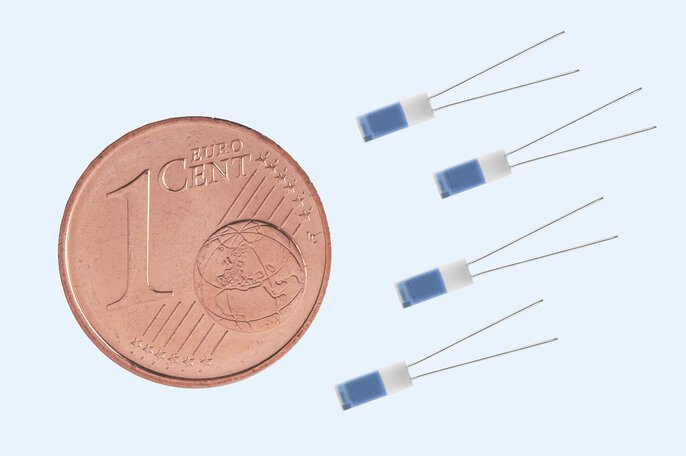
Pt100 sensor as part of a resistance thermometer
How do resistance thermometers work?
A change in temperature has a direct effect on the electrical resistance of a metallic conductor and thus enables conclusions to be drawn about the temperature. The temperature coefficient or temperature coefficient of the platinum sensors (approx. 0.38 %/Kelvin) is based on the physical properties of platinum; the basic resistances result from specifications. The characteristic curve is fixed in the standard DIN EN 60751, so that the application of the RTDs is relatively simple. The RTD is connected to an evaluation unit and the field device determines the ohmic resistance. Usually, linearizations such as Pt100 and Pt1000 are available in the field devices, after which the device determines the sensor temperature from the ohmic resistance. For more information on the design and function of resistance thermometers, watch the video.
How is an RTD constructed?
Resistance thermometers contain a temperature sensor which, in the simplest case, is connected to a connecting cable. Depending on the application, RTDs are also available with a connection head or with a connection plug or as a plug-in, screw-in or contact sensor. Below you will find some examples of resistance thermometers.
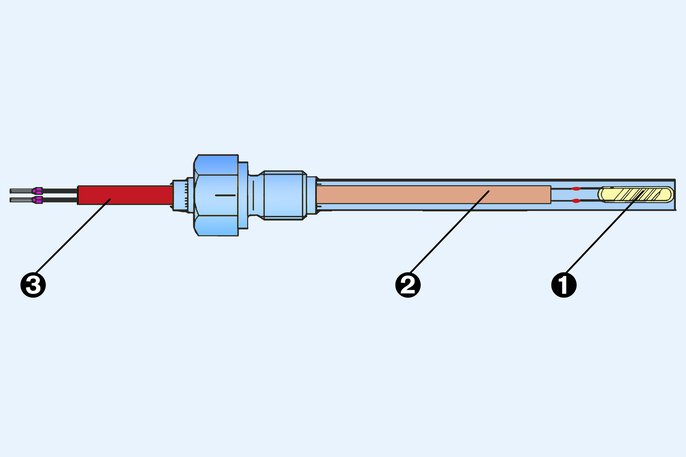
Structure of an RTD: 1 = sensor, 2 = inner line, 3 = connection line
Insertion thermometer with connection head
The connection head contains a connection socket for attaching the connection cable. The thermometer is fixed by a flange. Thermometers of this type allow measurement of up to 600 °C and are frequently used in furnace construction.
Screw-in thermometer with connection cable
Screw-in thermometers allow the pressure-tight termination of the process. In the case of thermometers with connecting cable, the maximum temperature is limited by the cable. Maximum temperatures of about 400 °C can be measured.
Surface probe
Surface probes have the advantage that they do not require a process connection. They measure the temperature of a surface and thus allow conclusions to be drawn about the medium temperature in a pipe system or tank. However, precision measurements are not possible with them.
Thermometer with connection plug
In order to allow easy mounting/dismounting of screw-in thermometers, it is often useful to obtain them with a connector plug. The connection systems shown below are frequently used.
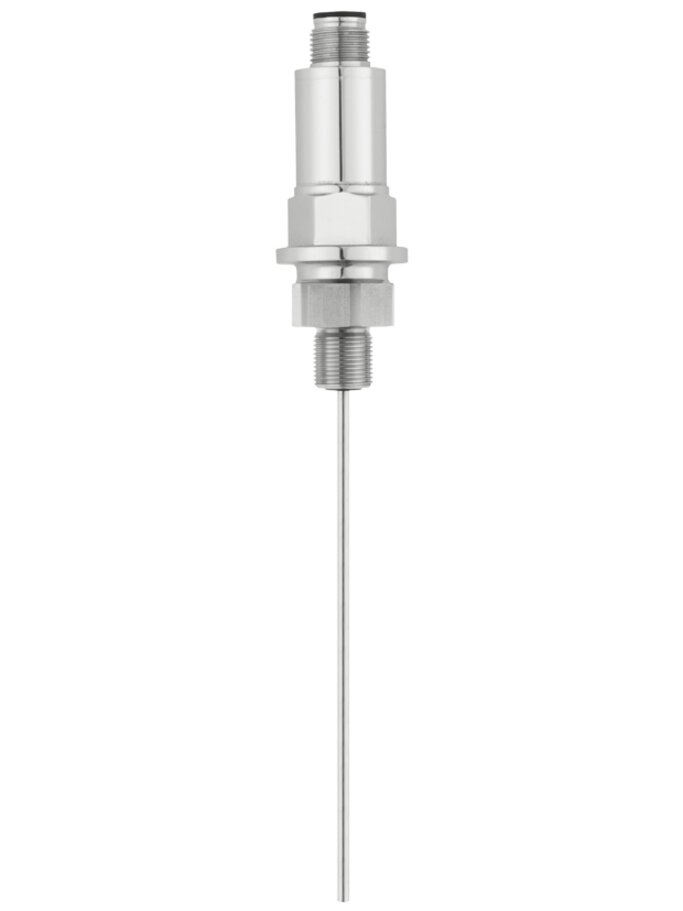
Machine connector M12 × 1 4-pole according to IEC 60947-5-2
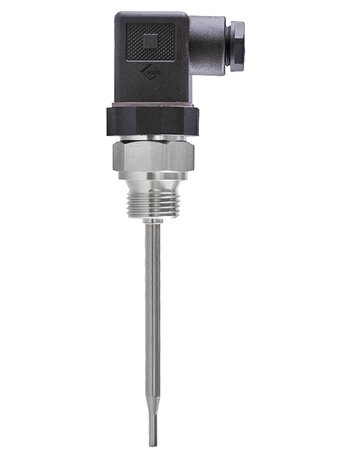
Connector according to DIN EN 175301
Are resistance thermometers interchangeable?
As far as the resistance thermometers have been equipped with a platinum sensor (like Pt100 or Pt1000), they are compatible. Thanks to the DIN EN 60751 standard, a replacement thermometer will have the same output signal.
How can RTDs be connected?
Resistance thermometers can be connected via a two-wire, three-wire or four-wire connection.
Two-wire connection
In the simplest case, an RTD can be connected via two wires. However, the two-wire connection results in a so-called line offset. For every 0.38 Ω of lead resistance, a Pt100 indicates a temperature that is 1 Kelvin too high. With the same ratios, an offset of 0.1 Kelvin occurs with a Pt1000. Even with relatively short cable lengths, the deviation in the display will be so great that a temperature adjustment must be made in the evaluation unit. This creates unnecessary effort, therefore RTDs should preferably be connected in three- or four-wire technology.

Field device with two-wire connection
Three-wire connection
With the three-wire connection, an additional wire connects the resistance sensor to the evaluation unit. The evaluation unit measures the voltage drop at the resistance sensor and the connecting leads (UM). With the help of the third conductor, the evaluation unit further determines the voltage drop at one conductor (UL½ ). The double amount of this voltage is subtracted from UM and thus the voltage drop at the resistance sensor is determined. If all wires have the same resistance, no error results from the line resistances and the resistance of the sensor is determined without error. The three-wire connection is sufficient for most applications.

Field device with three-wire connection
Four-wire connection
The fourth wire is used to determine the exact voltage at the resistance sensor in the four-wire connection.

Field device with four-wire connection
In this way, the resistance value is always determined accurately - even if the wire or terminal resistances are different. It is used for high accuracy requirements such as in reference or resistance thermometers in the laboratory field.
Do resistance thermometers have to be checked regularly?
The platinum sensors in the resistance thermometers have only a low drift behavior, i.e. their output signal changes only slightly over time. Nevertheless, calibration should be carried out regularly to check whether the temperature is still being measured with the required accuracy. Finally, regular calibration ensures high product quality. If a plant operator works according to guidelines and standards such as ISO 9001:2008, ISO 14001:2004 + Cor1:2009, he is even obliged to calibrate the measuring chains.
Should a Pt100 or a Pt1000 be used?
If the RTDs are operated via three or four conductors, it is irrelevant whether it is a Pt100 or Pt1000 sensor. The Pt1000 only has an advantage when used in two-wire technology, because with it the lead offset is only 1/10 of the Pt100. Example: The lead resistance of a connection line is 1.9 Ω. When using a Pt100, a line offset of approx. 5 Kelvin occurs - a line compensation must be carried out. If a Pt1000 is used, the offset is 0.5 Kelvin - in many applications, an adjustment is not necessary.
- ${title}${badge}
